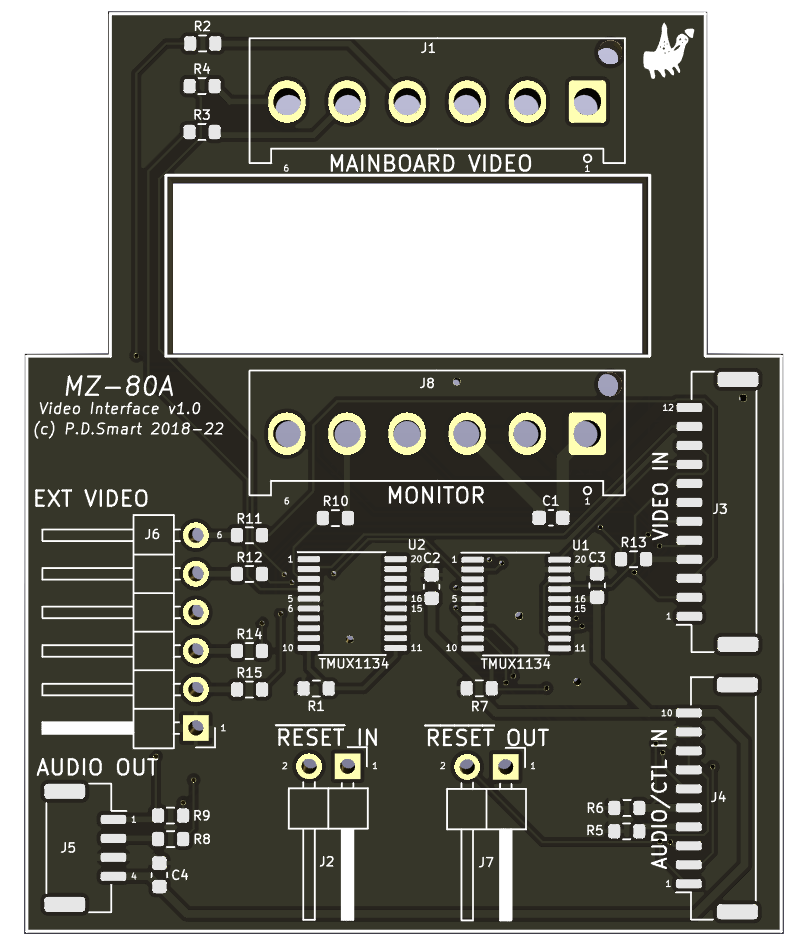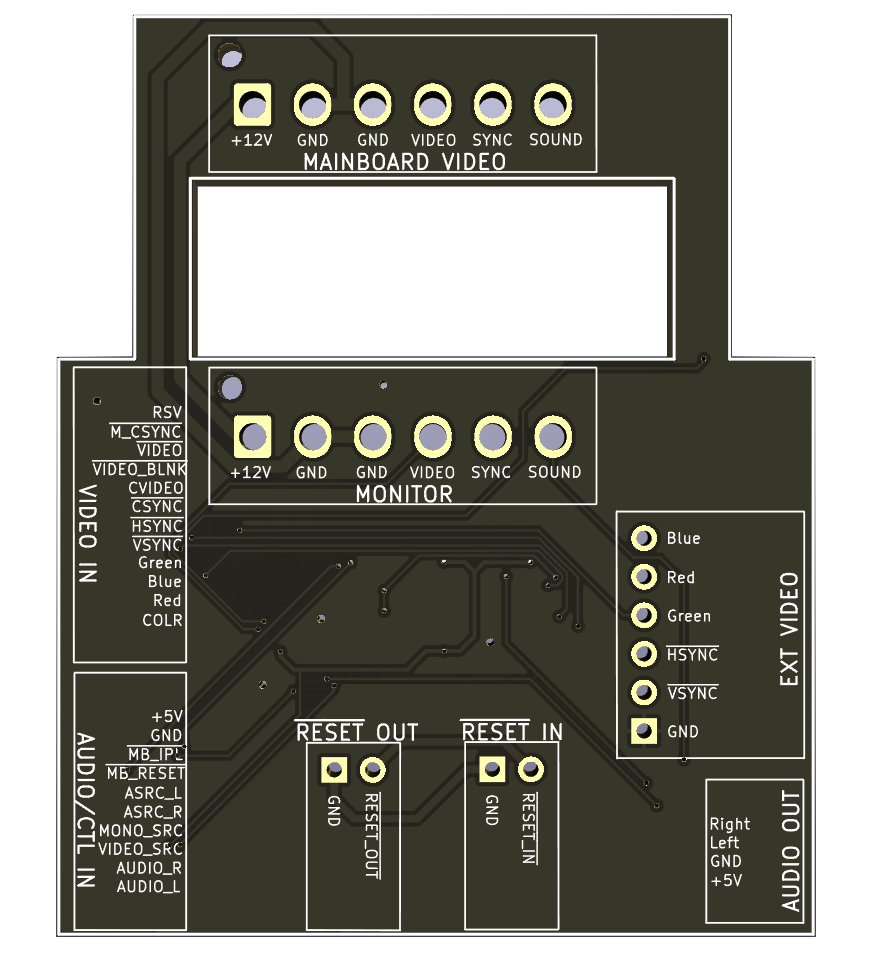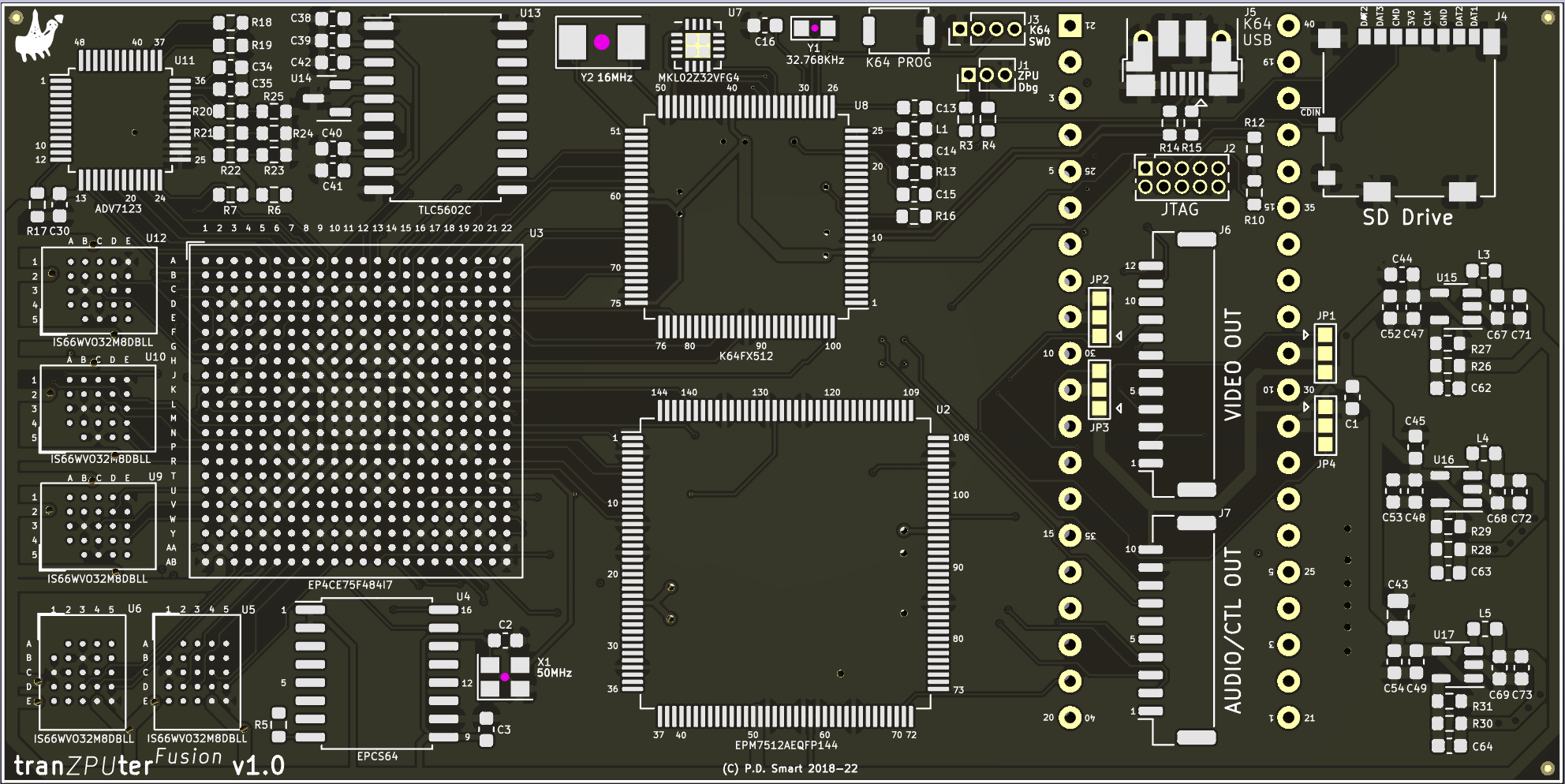 tranZPUterFusion
tranZPUterFusion
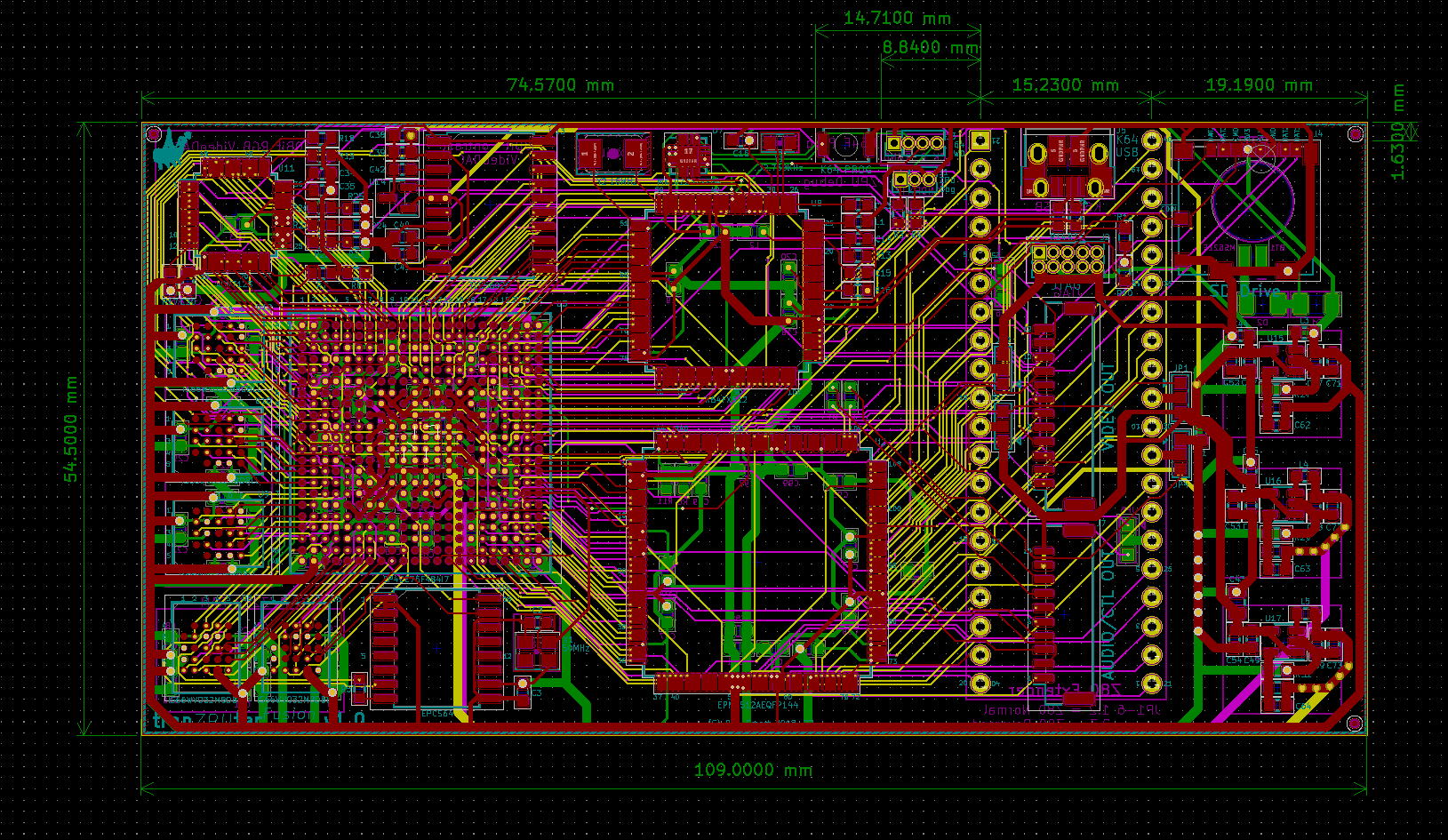
Foreword
The tranZPUterFusion is a fusion of the original tranZPUter hardware concept (Z80 replaced by an FPGA), the
tranZPUter SW concept (Z80 enhanced and aided by an I/O processor) and the tranZPUter SW-700 concept
(Z80 enhanced, I/O processor, FPGA and sound/graphics).
The design addresses issues and shortcomings found in the earlier designs and adds further enhancements:
- 75K/115K Logical Element FPGA with 300-400K internal BRAM
- a reconfigurable hardware array to implement most digital hardware functionality. - 512 Cell CPLD
- to interface the host 5V subsysten to the tranZPUterFusion and encode Z80 bus timing protocols. - ARM Cortex-M4 CPU
- to provide I/O support, SD Drive, Remote connection and maintain compatbility with earlier tranZPUter versions - 64MByte 32bit wide 200MHz SDRAM
- to enhance the ZPU processor and zSoft, provde additional resource to the host during normal and emulation modes. - 3x32MB RGB GRAM
- to allow for all VGA and HD standard resolutions upto 1920x1080 in 1M colours. - 30bit VideoDAC
- to allow for exact framebuffer and colour rendering. - 8bit Contrast DAC
- to allow for colour representation on an internal Sharp Monitor by representing colour as a varying contrast signal. - GRAM can be repurposed if required as FPGA has sufficient BRAM to support standard Sharp graphics modes.
- Sharp Series Emulation - the full suite of Sharp machines emulated in hardware, using the host resources such as keyboard, tape, FD etc.
- ZPU and zSoft OS
- allows the ZPU to act as the host processor, utilising host resources and running zOS. - High Efficiency Voltage Regulators
- the original tranZPUters ran hot, primarily through heat generated by the 4 on-board AM117 regulators dissipating through the board copper fill. These devices address the issue and use less host PSU resource. - Modular host VideoInterface
- the tranZPUterFusion and the tranZPUterFusionX share a common platform. Both are designed as small as possible so that they will fit into all Sharp Series hosts and many other Z80 based systems. The board interfaces to the host via the Z80 socket only.
- in order to fuse the Video and Sound of the host with the enhanced capabilities of the tranZPUterFusion, a standard modular daughter board, customised to each Sharp host, has been developed. The daughter board allows selection of host Video and Sound resources with those of the tranZPUter.
- the daughter boards can be used with either of the tranZPUterFusion boards.
- Original host specifications
- there might be slight differences in the Z80 functionality but these will be minimal. - Accelerator
- the Z80 can run at 128MHz using fast internal RAM yet maintain cycle accuracy with host hardware. - Emulation
- hardware emulation, ie. recreation of original hardware of the MZ-80K, MZ-80C, MZ-1200, MZ-80A, MZ-80B, MZ-700, MZ-800, MZ-1500, MZ-2000 and MZ-2200 systems. The host will appear as the selected machine and all host hardware will be available to the emulation, ie. tape drive. - Graphics
- all original Sharp MZ graphics modes, regardless of host, are available and can be programmed via Basic etc. Also VGA graphics modes and FPGA GPU devices available. - Sound
- the host will have access to 2xSN76489 sound processors along with original audio capabilities. - Processors
- the Z80 and ZPU processors are tried and tested, the IP cores exist for many other processor families and could quite easily be ported to the tranZPUFusion, ie. a Sharp MZ-700 host running as a BBC Micro B!
Daughter Boards
The tranZPUter series was initially developed in the Sharp MZ-80A and was primarily a Z80 replacement. As the concept evolved and the tranZPUter SW-700 was developed for the MZ-700 it became more of an integral component of the machine, offering original and upgraded Video and Audio capabilites by intercepting and routing existing signals.
After significant developments on the tranZPUter SW-700 it became desirable to port it back to the MZ-80A and MZ-2000 but these machines had different CPU orientation and signal requirements, ie. driving internal and external monitor. This requirement led to the concept of daughter boards, where a specific board would be designed and developed for
the target host and would plug into the tranZPUter SW-700 card. Ideally I wanted to port the SW-700 to an MZ-800/MZ-1500 and X1 but the size of the card and orientation of the Z80 was a limitation.
During the design of the tranZPUterFusion one of the main requirements was to make the board small and the Z80 orientation changeable so that it could fit many more machines. As the SW-700 also interfaced to the Video and Audio of the machines and each was quite different, it became apparent that the tranZPUterFusion needed
to include a concept to allow different video/audio interfaces according to the targetted host. This concept was realised via daughter boards. Two connectors would link the tranZPUterFusion to a daughter board which would be specifically designed for the intended host.
The daughter boards would be responsible for switching and mixing video/audio signals and to drive internal monitors and provide the correct input and output connectors for ease of installation.
Currently three daughter boards have been developed, for the MZ-700, MZ-80A and MZ-2000 and more will follow as the design progresses.
MZ-700 Daughter Board
The MZ-700 daughter board is designed to be inserted into mainboard modulator output and the modulator in turn connected to the daughter board.
The MZ-700 requires switching of the original mainboard video and tranZPUterFusion FPGA video to the existing output connectors. This is accomplished with analogue MUX switches.
The sound of the MZ-700 is sent directly to a speaker and in order to inject tranZPUterFusion sound, the mainboard speaker output is routed to the daughter board, level converted and switched. The FPGA offers stereo sound so this is selectively switched/mixed with the original sound and fed to a Class D amplifier which then drives
the internal speaker.
This setup allows for emulated machines, whilst running in the host on the FPGA such as the MZ-800/MZ-1500, to output their sound to the internal speaker. An audio output connector is provided for connection to stereo speakers if desired.

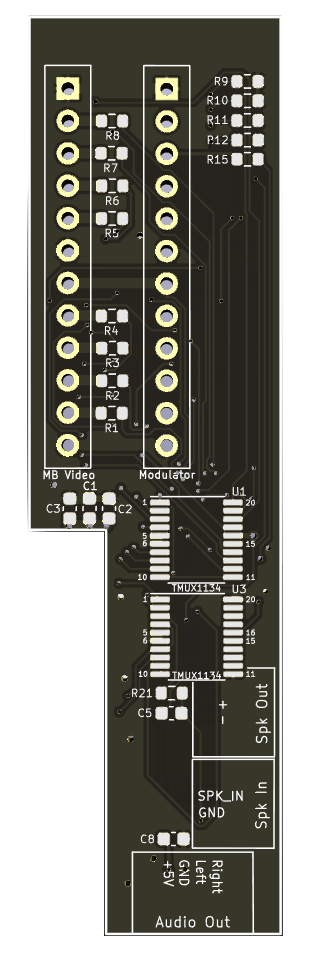
MZ-2000 Daughter Board
The MZ-2000 daughter board is designed to be inserted simultaneously into the mainboard monitor and IPL connectors. The daughter board switches video source to the internal monitor, either the original mainboard video or FPGA video. The video source for the internal monitor is independent to the external moonitor source so different images can
be displayed on the internal monitor and external source at the same time.
The external video output can be fed from the original mainboard video or the FPGA video, the external video uses its own framebuffer so can be different to the internal monitor.
The audio is intercepted and switched/mixed prior to being sent to the internal audio amplifier.
The daughter board presents all the original connectors so it is easily installed.
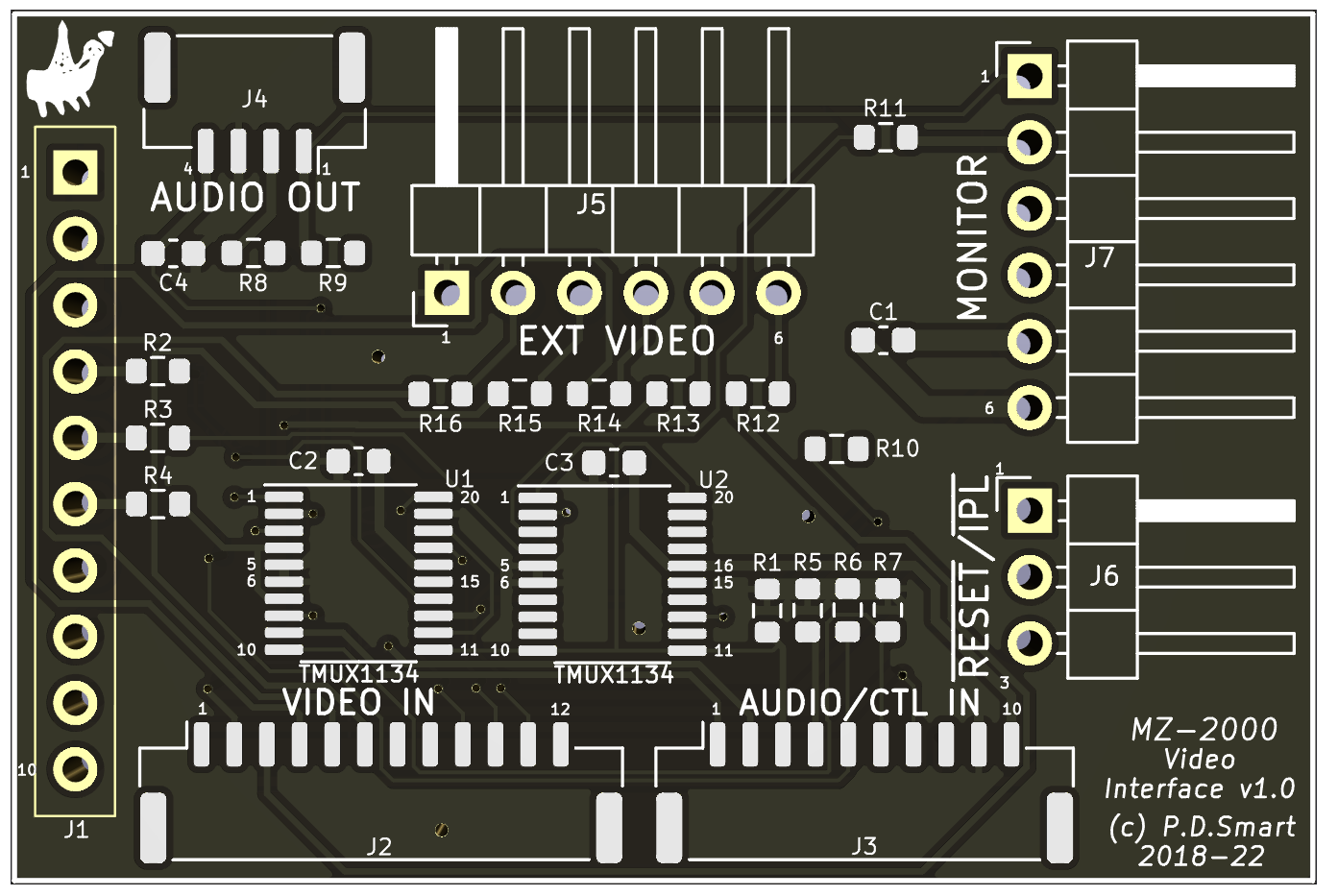
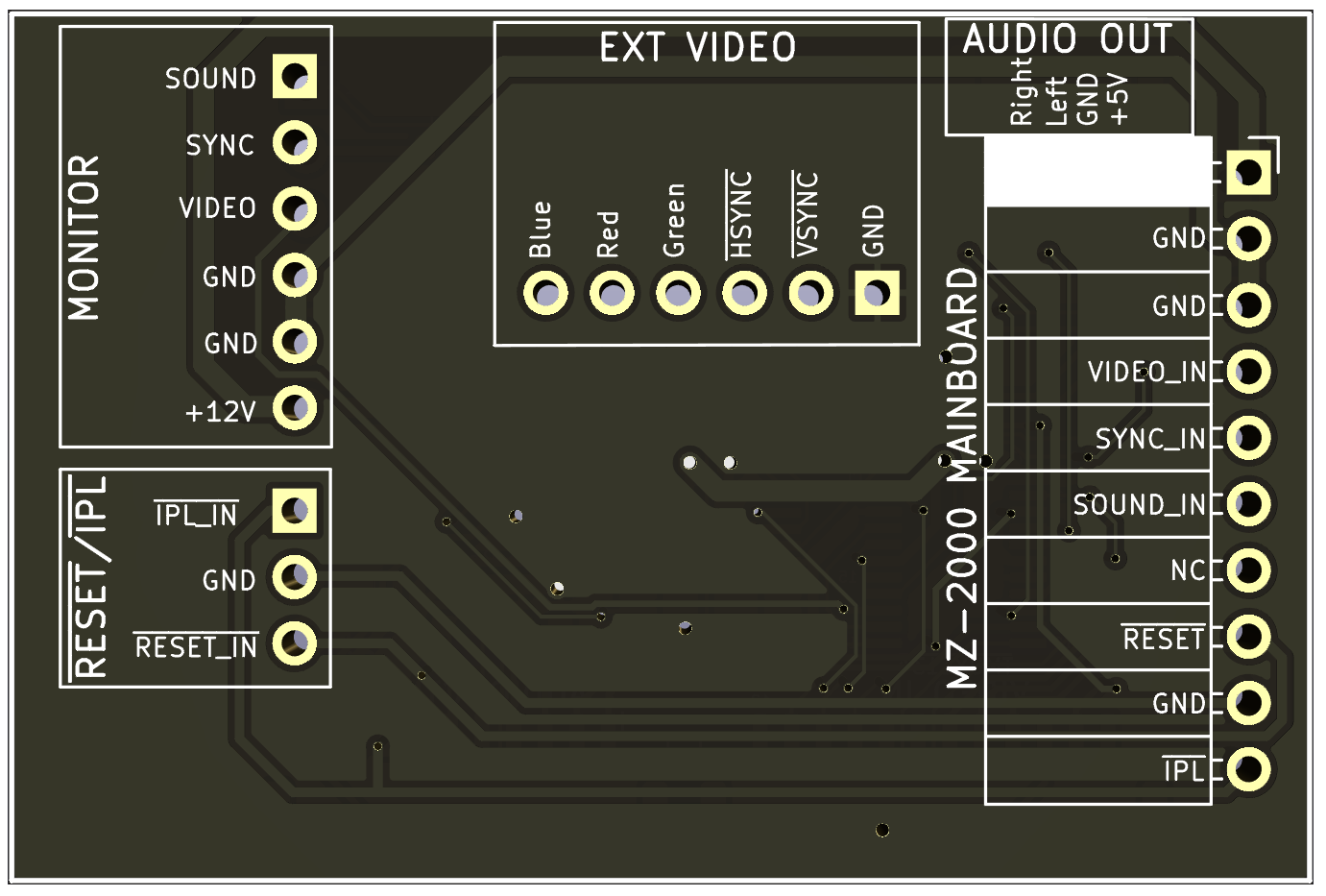
MZ-80A Daughter Board
The MZ-80A daughter board is designed to be inserted into the original Hirose monitor connector with the tape recorder plug being inserted through the gap in the daughter board. The system RESET is routed through the daughter board via 2pin connectors.
The daughter board switches video source to the internal monitor, either the original mainboard video or FPGA video. The video source for the internal monitor is independent to the external moonitor source so different images can
be displayed on the internal monitor and external source at the same time.
The external video output can be fed from the original mainboard video or the FPGA video, the external video uses its own framebuffer so can be different to the internal monitor.
The audio is intercepted and switched/mixed prior to being sent to the internal audio amplifier.
The daughter board presents all the original connectors so it is easily installed.
